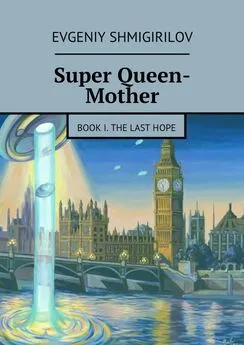Daniel Ingram - Mastering the Core Teachings of Buddha - An Unusually Hardcore Dharma Book
- Название:Mastering the Core Teachings of Buddha - An Unusually Hardcore Dharma Book
- Автор:
- Жанр:
- Издательство:Aeon Books
- Год:2009
- ISBN:9781904658405
- Рейтинг:
- Избранное:Добавить в избранное
-
Отзывы:
-
Ваша оценка:
Daniel Ingram - Mastering the Core Teachings of Buddha - An Unusually Hardcore Dharma Book краткое содержание
Mastering the Core Teachings of Buddha - An Unusually Hardcore Dharma Book - читать онлайн бесплатно полную версию (весь текст целиком)
Интервал:
Закладка:
Those of Third Path have shifted their understanding of what progress is from those of Second Path, and have begun to see that it is 280
Models of the Stages of Enlightenment about perceiving the emptiness, selflessness, impermanence, luminosity etc. of sensations in daily life and begin to see that they have the ability to do this. This can be a long, developmental process from the first time they notice this to it becoming a nearly complete experience. Thus, Third Path tends to be a long path, though it doesn’t have to be.
At the beginning of Third Path, most practitioners think: “I’ll just complete more cycles of insight, like I did before, and this will do the trick.” They don’t tend to understand what it is they have attained all that well yet, nor its deeper implications. By the mature stage of Third Path, which can take months to years to show up, the practitioner is more and more able to see the emptiness, selfless, centerlessness, luminosity, etc. of phenomena in real-time, so much so that it can be very difficult to notice what artificial perceptual dualities remain.
As they cycle, they will enter new territory, possibly causing some uncertainty or instability, and with each Review phase they tend to really feel that they have done it until they begin to notice the limits of their practice. There can be this nagging something in the background that things aren’t done, and yet figuring out exactly what the problem is can be very slippery. It is a bit like being in the stages before stream entry, trying to figure out what exactly needs to be done. They need to notice something that has nothing to do with the cycles, to finally untangle the knot of perception at its core, but doing this can be a real trick. It is a very strange place, as one seems to know the dharma all the way to the end and yet somehow it just isn’t quite enough. In that vein, it is interesting to note that I wrote the vast majority of this book while I was some sort of anagami, and on reflection I got just about everything right.
My emphases are slightly different now, but the basics are all the same.
As things progress, anagamis begin to tire of the cycles to a small or large degree and begin to look to something outside of them or not related to them for the answer to the final question. Finally, the cycles of insight, the states of concentration, the powers, and all the other perks and prerogatives of their stage of awakening or concentration abilities (if they developed them) hold no appeal and only lead to more
unsatisfying cycles.
I completed around 27 full, complete insight cycles with mind-blowing A&P Events, Ass-kicking Dark Nights, Equanimity phases, and 281
Models of the Stages of Enlightenment
what seemed to be brand new, fresh Fruitions and Review phases between third and fourth path. There is nothing special about that number, both because it is just a guess and because of the reasons I stated when describing the phenomena of Twelfth Path. The later cycles got faster and faster, so that by the end it seemed I was whipping one out every few weeks or even every few days, but they still seemed to be leading nowhere.
It was only when I had gotten so sick of the cycles and realized that they were leading nowhere that I was able to see what has nothing to do with the cycles, which also wasn’t anything except a strange untangling of the knot of perception of them. The cycles, for better or worse, have continued just the same. Thus, there is not much point in counting cycles or paths, as they don’t necessarily correlate well with anything past the first two or three, and issues of backsliding can really make things complex, as I explained earlier.
Finishing up my Revised Four Path Model, arahats have finally untangled the knot of perception, dissolved the sense of the center point actually being the center point, no longer fundamentally make a separate Self out of the patterns of sensations that they used to, even though those same patterns of sensations continue. This is a different understanding from those of Third Path in some subtle way, and makes this path about something that is beyond the paths. This is also poetically called the opening of the Wisdom Eye. What is interesting is that I could write about this stage quite well when I was an anagami, but that is a whole different world from knowing it like arahats know it.
The Wisdom Eye may seem to blink initially. It may go through cycles of flashing open just after a Fruition and then slowly fading over a few hours (at least on retreat) as each round of physical sensations, then mental sensations, then complex emotional formations, then lastly fundamental formations such as inquiry itself move through and become integrated into this new, correct and direct perception of reality as it is. Review cycles may occur many times during each flash, but when the eye is open they seem rather irrelevant in comparison to keeping the level of clarity and acceptance high enough to keep the eye open. When the eye fades and the knot of perception seems to retie itself, the familiar insight cycles may seem like pure drudgery, with the focus 282
Models of the Stages of Enlightenment drifting back to getting lost in the cycles and then gradually shifting again to getting clear enough to get the eye to open again. The themes that occupy center stage go through a cycle that is very much like a progress cycle.
Finally, the Wisdom Eye cycles and insight cycles all converge, and the thing stays open from then on, which is to say that at that point it all seems the same whether or not the eye is open, which it actually was.
That being seen, nothing can erode or disturb the centerlessness of perspective. Done is what is to be done, and life goes on. That there are arahats who have opened the Wisdom Eye but had it fade and those who have opened it and had it stay open is rarely mentioned but worth knowing.
For the arahat who has kept the thing open, there is nothing more to be gained on the ultimate front from insight practices, as “done is what is to be done”. That said, insight practices can still be of great benefit to them for a whole host of reasons, there is a ton they can learn just like everyone else about everything else there is to learn. They can grow, develop, change, work and participate in this strange human drama just like everyone else. Practicing being mindful and the rest still helps. They also cycle through the stages of insight, as with everyone above stream entry, so doing insight practices can move those cycles along.
A SIMPLE MODEL
In earlier versions of this work, I had a model called The Heart Sutra Model. The Simple Model is the less mysterious, stripped down version of that earlier model, though in its essence it is the same. While in one sense it is also rephrasing of the Revised Four Path Model, as it has no numbers, and is free of the traditional names, it has some advantages over that terminology.
I present this somewhat novel model here because it focuses on real insight directly and treats any emotional benefits of this as side effects.
Further, there are often too many cycles of insight before arahatship, making the Four Path model troublesome. This phenomena of too many cycles (which I will sometimes call “paths” with a lowercase “p”) between each of the Four Paths gets worse as one works towards final awakening. As Bill Hamilton put it, and I have learned the hard way,
“The arahat fractal is vast.”
283
Models of the Stages of Enlightenment
The Simple Model does not reinforce fascination with content, nor with life denying ideals or limited emotional range models in the way that the traditional Four Path Model often does. It does not tempt one to count paths. It keeps the focus on precise inquiry into the truth and one’s experience of it or lack thereof.
This model basically says that enlightenment is about direct insight that progressively reveals something different in the relationship to the field of experience and gradually allows things in it to be held in their proper proportion. Thus, it is a Non-Duality Model.
The first understanding is that sensations are sensations, thoughts are thoughts, and this forms the basis of further inquiry. When the universal characteristics of these sensations begin to be seen, this represents growth in understanding. When the whole sense field is known directly and completely as it is, this can cause an entrance into Fruition through one of the Three Doors, and represents the first stage of awakening.
When one appreciates the cycles of the process of awakening and has completed at least one more new progress cycle, this is the next stage. When one begins to appreciate the emptiness, luminosity, centerlessness, agentlessness, etc. of phenomena in real-time and this becomes the focus of practice rather than Fruition, this is the next stage.
When the sense of the watcher, observer, subject, controller, doer, etc.
is seen completely as it is and the knot of perception untangles, that simple, fundamental way of perceiving things is the next stage of awakening. When that untangling stays untangled, that is the next stage.
As that understanding is integrated into our lives, that is the next phase, though it is more an ongoing process than a stage.
The problem is that the traditions seem to want to make this understanding into so much more than it is, such as add ideals of emotional perfection onto this. There is some truth in the models dealing with emotions, but it has to do with things moving through faster and being seen more clearly. It does not have anything to do with bad emotions not arising. I hate to even go here, as my goal is to give the emotional models the bashing they richly deserve, but I also want to not throw the baby out with the bathwater. Thus, here it goes.
284
Models of the Stages of Enlightenment As the deep-seated perceptual sense of a separate, continuous, permanent, observing Agent stops being extrapolated from the same old patterns of sensations that seemed to be those, there is this wider inclusive something that can come into the consciousness of the enlightened individual, depending on their level of awakening. There is also a slowly growing directness of perception that comes as reality is not filtered so exclusively through thought. These two can combine to give the emotions of enlightened beings less sticking power, so that they may move through more quickly than for those that are not enlightened, and also may be seen more quickly and clearly as they arise and vanish.
There may also be less blind contraction into thoughts and emotions and a wider perspective, thus giving the other parts of the brain more of a chance of creating moderated responses to the emotions. That said, even when seen through, there seems to be a biological component to how emotions move through that can only be expedited so much.
Anyone who thinks these highly qualified statements are anything like a vision of emotional perfection or the elimination of all negative emotions is not paying attention! That is the last thing I wish to imply. I merely wish to say that there is some increased clarity about our basic human experience and it can help, but that is all. That said, you would be amazed how angry, lustful or ignorant enlightened beings can be, and they can still do all sorts of stupid things based on these emotions, just like everyone else. The ability to moderate responses to emotions can sometimes give the impression that those emotions have been
attenuated, but that is not the same thing, and there is my nice transition to the Action Models.
THE ACTION MODELS
The Action Models tend to involve certain actions that enlightened beings cannot commit or certain actions they must commit. Both types of models are completely ridiculous, and so we come now to the first of the models that simply has no basis in reality. The traditional Theravada models contain numerous statements about what enlightened being cannot do or will do that are simply wrong. My favorite examples of this insanity include statements that arahats cannot break the precepts (including killing, lying, stealing, having sex, doing drugs or drinking), cannot have erections, cannot have jobs, cannot be married, and cannot 285
Читать дальшеИнтервал:
Закладка:





![Дженнифер Гюнтер - The vagina book. Главная книга для тех, у кого есть этот орган [litres]](/books/1061538/dzhennifer-gyunter-the-vagina-book-glavnaya-kniga-dl.webp)




